Hello all,
Welcome to another post, as most readers make their way back to resume business activities after the summer sojourn.
HUNKY DORY ?
The latest economic assessment indicates that both the global and US economy are at an inflection point with a somewhat faster growth rate. The initial phase of the fragile European recovery from its double-dip recession has been tentative [BNY Mellon]. Japanese growth surged in Q1 and then plunged in Q2, resulting in a relatively flat GDP for H1, 2014 – the expansion is however expected to resume. Geopolitical turmoil has been occurring in various locations and appears to have worsened in recent times. A dip in export growth helped send the German economy in reverse gear in Q2, with GDP down by 0.2% compared to Q1, mainly due to import growth outperforming the country’s exports. France also witnessed zero growth in the second quarter. Not surprisingly, the Spanish and Portugese economies expanded by 0.6% in Q2, though observers warn of the vulnerability of both, to shocks [Plastics & Rubber Weekly]. The stock market was on a roller coaster ride in early August and there currently appears to be an uptick, following a brief period of stabilization.
U.S. TAKES OVER
What made news in mid-August on the energy front was the unsurprising revelation that the US produced 13.63 million barrels per day (BPD) of oil and natural gas liquids in April 2014, which was 2 million BPD more than Saudi Arabia, per data released by the Energy Information Administration (EIA). This energy miracle has been made possible by the shale oil and natural gas boom from states such as Texas and North Dakota, which saw their respective production levels soar by 119% and 177% from 2010 to 2013 [The Motley Fool]. Despite turmoil around the world, oil prices are at 13-month lows – analysts at Goldman Sachs expect oil price to remain stable over the next year, thanks to America’s production boom replacing oil from less stable areas of the world.
Little wonder that reshoring is no longer a myth in the US with the manufacturing renaissance gaining ground progressively.
DRIVING…IN COMFORT
Audi, the Volkswagen AG subsidiary, is introducing GFRP suspension springs before the end of this year for an upcoming, upper mid-size model. The composite spring is around 40% lighter than its steel counterpart (3.5 lbs vs. 6 lbs) resulting in a weight saving of ~9.7 lbs for four springs. The GFRP springs save weight at a crucial location in the chassis system, enhancing vibrational comfort and therefore making driving more precise [Plastics News]. The composite spring is reportedly made by wrapping glass fibers in alternating angles around a core of twisted fibers impregnated with epoxy resin. The impregnated strand is thicker than the wire of a steel spring and the overall diameter is slightly larger.
STORMING STEEL’S DOMAIN
The automotive sector continues its relentless pursuit of lightweighting as a means of achieving fuel efficiency to meet both EU regulations and CAFE norms in the US. At the 2014 VDI Plastics in Automotive Engineering Conference in Germany; Volkswagen described an experimental CFRP crossbeam (front, central and rear crossbeams for the Tiguan model), all designed for identical bending and buckling strength as steel crossbeams. Epoxy resins with glass transition temperatures of 120°C, 150°C and 180°C were evaluated keeping in perspective car body manufacturing tolerances for permanent deformation after typical 200°C electrophoretic paint dip (EPD) coating oven exposure [European Plastics News]. Front and rear crossbeams were fixed to the steel bodywork by resistive element welding and rivets and the central crossbeam by screws and epoxy adhesive.
PERCEPTIBLE SHIFT
The use of composites in window frames in lieu of PVC is well known. However, it is the gradual shift in the type of matrix material that is capturing the attention of the building sector. While epoxy and vinyl ester resins have been popular, polyurethane (PU) matrix is emerging as the preferred choice in view of better thermal insulation characteristics. The composite profiles based on GFRP or CFRP (generally the former) are produced by pultrusion. With a thermal conductivity similar to to that of wood or PVC, the window frames satisfy the requirements of energy-saving regulations and passive house standards [Plastics & Rubber Weekly]. The superior mechanical properties stem from the high glass fiber content (~80% by weight), thereby making it possible to manufacture profiles with a very narrow visible height and low installation depth – such as sliding doors for balconies and terraces.
ONE-UPMANSHIP ON METAL
A new thermoplastic composite for high-speed, high-volume injection molding with tensile strengths close to or better than metals, is making waves with the potential to replace titanium aerospace bolts. With both GF and CF versions, the material comes in three performance levels depending on the combination of polymer types and fillers. Tensile strength can reach from up to 50,000psi to as high as 120,000psi, that exceeds steel. Tensile modulus ranges from up to 5 million psi to as high as 12 million psi [Design News]. The composites are 75% lighter than steel and 60% lighter than titanium. Thermoplastics include PEEK, PPS, PA, PEI, PPA. Short or long fibers can be used depending on mechanical strengths desired. Potential applications include nuts, bolts, gears, brackets, recreational product structures, sporting goods. Market sectors include aerospace, automotive, oil and gas, alternate energy, medical and electronics.
ALL FOR A COMMON CAUSE
Both BMW and Boeing have done pioneering work in recycling of carbon fiber, considering the extensive usage by both manufacturers in the automotive and aerospace sectors respectively. They also signed a collaboration agreement in 2012 for joint research and knowledge-sharing in CF recycling. BMW uses recycled CF in the epoxy resin based CFRP roof of the i3 electric drive and i8 plug-in hybrid cars as well as the i3’s PU-CFRP rear shell. Oriented (anisoptropic) and isotropic non-woven fleece materials from CFRP waste materials is now a practical reality. The recycled CF yarns are stretch-broken with high tensile strength and low yarn count, thereby rendering them suitable for processing into textile fabrics. While most recycled CF is obtained by thermal treatment to burn away organic polymer content, there is also a supercritical fluid solvent (solvolysis) process. Fluidization in water makes recycled CF pulp non-woven tissue-mat fleece, akin to papermaking. Up to 3 meter wide fleece is made in a mechanical carding process, sans heat. This involves cutting CF fabric production scrap, opening the fibers and combining them into a fleece that has superior draping performance compared to uni-directional preform fabrics [European Plastics News].
The high cost of CF and CFRP necessitates ways and means of recycling and reuse of CF. When two leaders in their respective market sectors collaborate, the outcome can only be positive and a commercial success.
CUTTING-EDGE TECHNOLOGY
New developments abound when it comes to revolutionizing the way cutting, drilling and machining of composites is accomplished. Ultrasonic-assisted machining (UAM) is the latest technique that utilizes a specially designed piezo-electric transducer working in tandem with a traditional turning, drilling or milling machine and developed by a team of researchers at Leicestershire, UK. The device creates ultrasonic vibrations between 20kHz and 39kHz and the machining technique makes composite materials sufficiently “soft” in the area being worked – hence much less force is needed from the cutting tool, resulting in less damage, less waste and a better finish [Plastics Today]. CFRP composites based on epoxy resin have been successfully machined utilizing this technique. The challenge lay in minimizing, and, if possible, completely eliminating damage due to drilling. Ultrasonic drilling has shown excellent damage mitigation with significant drilling force reductions.
THINNER, LIGHTER – THE NEW NORM
The first all-thermoplastic liftgate has been produced for the 2014 Nissan rogue crossover in North America. The complete liftgate (recyclable) assembly weighs 24 kg, is 30% lighter than stamped steel and contributes to fuel economy increase. The outer panel (2.8mm thick) with integrated spoiler is molded from a thermoplastic olefin (TPO), while the inner panel (2.5mm thick) is a 30% long glass fiber reinforced PP. Injection molding on 4,400Tonne presses was used for producing the component [Plastics Today].
ETHANE ROUTE – ASCENDANCY
The shale gas revolution impacting the market dynamics of ethylene and propylene availability (and price) has been dwelt with in several earlier posts. The margins with ethane cracking are almost double that of naphtha [Platts]. Hence, one need not have to be a financial wizard to figure out the commercial viability and profitability of ethane (shale oil/natural gas based) crackers (in lieu of crude oil based naphtha). Ethane production continues to rise in the US. Global polymer major SABIC is modifying its cracker in the UK to handle shale gas imported from the US – the plant is expected to be commissioned in 2016 [Plastics & Rubber Weekly]. Deriving advantage from cutting edge technology in creating new sources of competitive feedstock is the global norm being embraced by corporate leaders whose vision is clearly to maintain their strategic advantage extending into the future.
POSITIVE GROWTH TREND
The US demand for pipes is expected to rise 7.3% annually through 2018 driven strongly by growth in crude oil and natural gas activity as pipes are used extensively in drilling and oil&gas pipeline applications. Per latest report from a leading market research firm, demand will also be supported by a rebound in building construction, increasing housing completions and strong interest in kitchen and bathroom renovation projects that will boost demand for drain, waste and vent pipe. Plastic pipes are poised to grow at a rapid pace of 8.7% annually through 2018. Growth will be spurred by the increasing use of plastic (including composites) pipes at the expense of steel and concrete. In applications such as potable water and sewer/drainage, plastic pipes will be increasingly specified by consumers trying to reduce maintenance and replacement costs [Plastics Today]. HDPE pipes that accounted for the second largest share (next to PVC) of pipe demand in 2013, is expected to see the largest demand in 2018 boosted by its use in sewer/drainage, potable water and natural gas distribution applications – all of which also use composites. The spinoff from ethane surplus (shale gas fallout) is bound to result in abundance of polyethylene. The technological advances by manufacturers in introducing improved grades of HDPE, rivaling composites in many applications, could be one of the reasons attributed to the spurt in demand (through 2018).
BALANCING ACT
As we approach the end of the third quarter, the general global optimism on growth is being dampened by geopolitical turmoil that is likely to linger awhile. In normal circumstances, the immediate fallout would have been a spike in crude oil (and consequent energy) prices, considering the clout that OPEC wields. The situation this time around is however slightly different – thanks to the shale gas (fracking) revolution in the US and less dependence on imported oil. It has been almost a tectonic shift and game changer with wide repercussions in the polyolefinic (PE,PP) supply chain scenario. The consequent upside has been the spate of technological advances in polymeric composites to derive maximum advantage from the situation. While the battle lines between metals and composites were always drawn and clear, the latter continues to inch its way and encroach the entrenched domain of the former in several market segments.
But then, we do need to remind ourselves of the adage “slow and steady wins the race”, albeit with a slight twist….. and that is the industry needs to up the ante by transforming the current canter (relatively speaking) into a gallop, and hasten bridging the yawning (double digit and multi-fold) gap that still persists between metals and composites’ industrial usage.
Till the next post,
Cheers,
Email: SS@essjaycomposites.com
Twitter: @essjaycomposite
Website: www.essjaycomposites.com









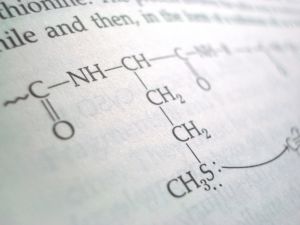








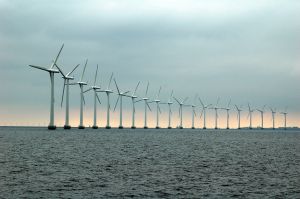









































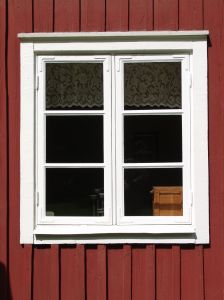

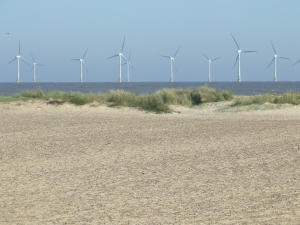


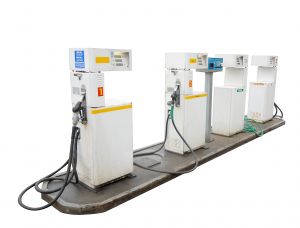


















You must be logged in to post a comment.